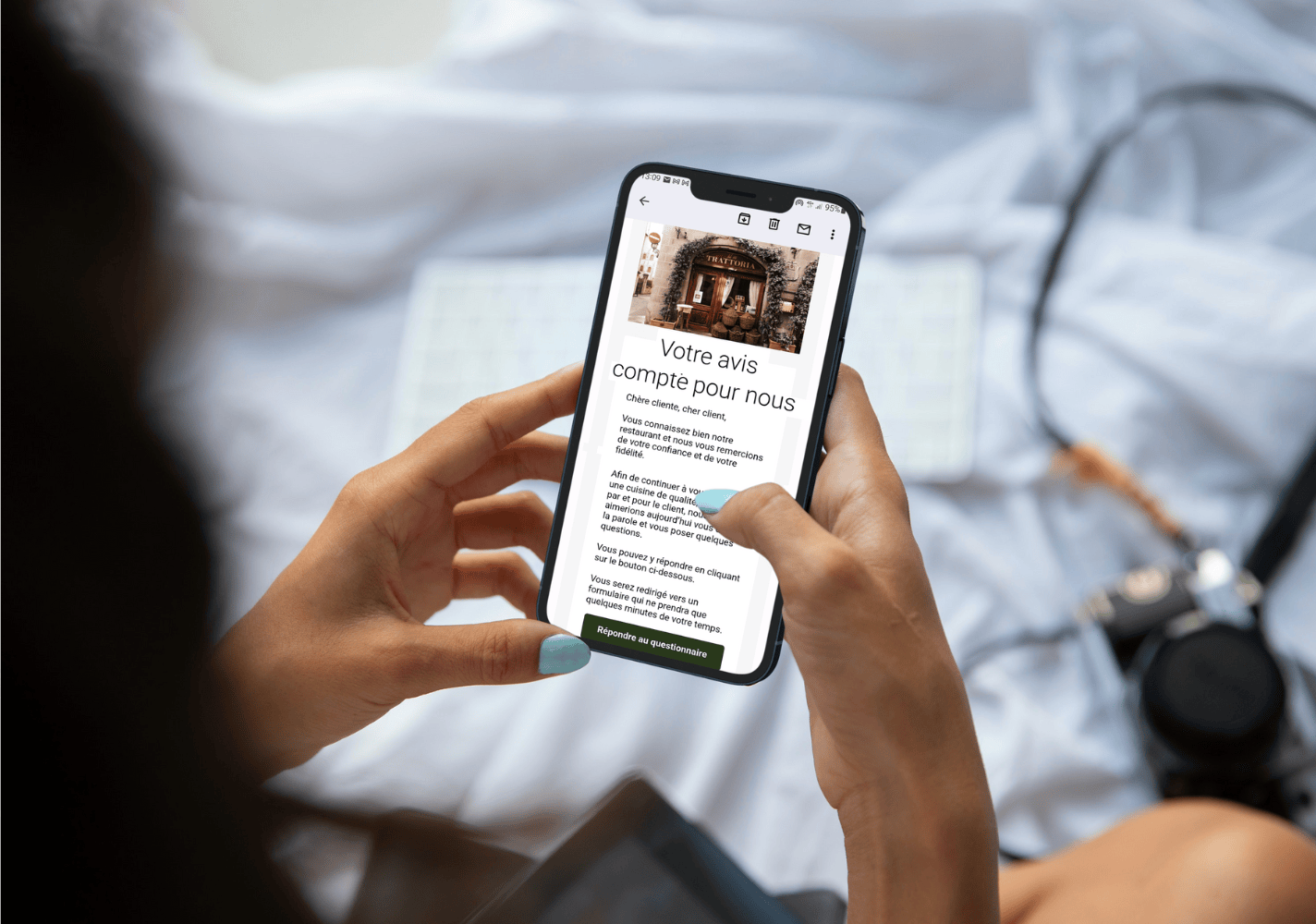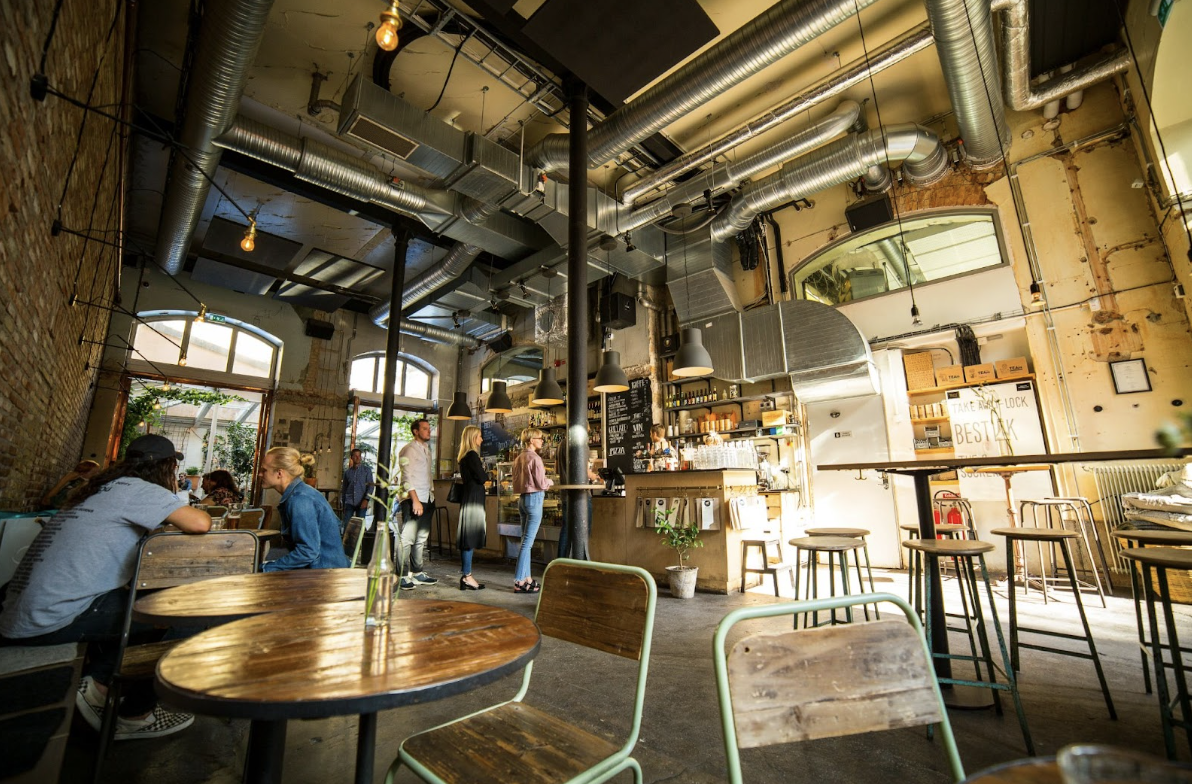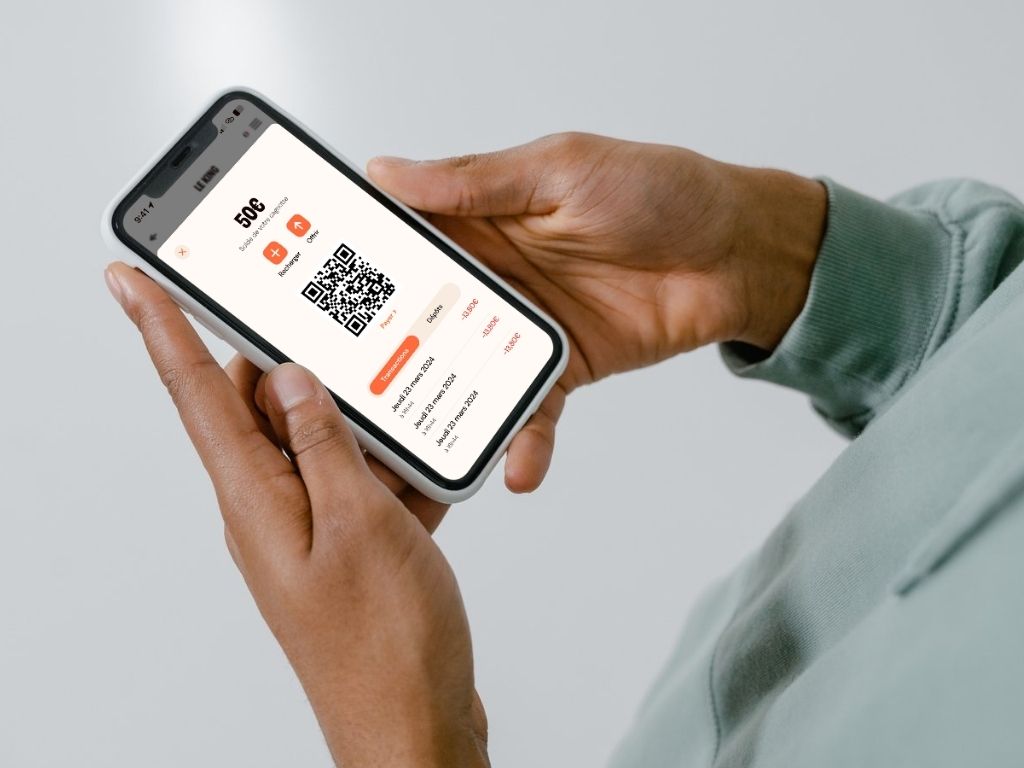Restaurants: 5 ways to collect customer reviews
10 February 2025
Visit customer reviews have a direct impact on your restaurant's traffic, local SEO and brand perception.
One satisfied customer who shares his or her experience online can convince dozens more to come through the door. Conversely, a lack of reviews or poorly managed negative comments can impact your sales.
The problem is that most customers don't spontaneously leave a review. It's not that they didn't enjoy their experience, it's just that they're moving on. So how do you get more reviews without harassing your customers or distorting the feedback?
The key is to simplify the process and integrate the collection of reviews into the customer experience. QR codes, automated e-mails, rewards... There are a number of effective strategies for encouraging your customers to give their opinion, effortlessly.
In this article, we share 5 ways to generate more reviewsimprove your reputation and attract new customers.
Why are customer reviews essential for your restaurant?
Online reviews have a direct impact on your restaurant's traffic. A well-reviewed restaurant attracts more customers, while a lack of reviews or unmanaged negative comments can drive away customers.
They also play a key role in local referencing: The more reviews you have (and the more positive they are), the higher your restaurant's ranking in Google results and applications like Maps or TripAdvisor.
Finally, reviews are a valuable source of information. They help you understand what works, what doesn't and where you can improve.
Ignoring reviews means missing out on acquisition and loyalty opportunities.
Why don't your customers leave reviews?
Most satisfied customers leave without even thinking about leaving a review. It's not that they didn't like it, it's just that they don't think about it. Unlike negative experiences, which prompt reactions, a successful visit is often regarded as "normal" and doesn't generate spontaneous feedback.
Other obstacles come into play: lack of time, too long a process, fear of sharing their opinion publicly... Some don't even know where to leave it. And without a reminder or prompting, they move on.
The challenge is not to get good opinions, but to get them at all.
The solution? Integrate their collection into the customer experience, at the right time and with the right leverage.
01. QR Codes on tables or counters: notices in a scan
A QR Code well placed, you're guaranteed to get reviews effortlessly.
By scanning the code on the table, bill or counter, customers are taken directly to the review page (Google, TripAdvisor, The Fork...). No more searching for a place to leave a comment.
The goal: to make the action immediate. Fewer clicks = more views.
Add a clear message: "Tell us what you think!" or "Your opinion counts (and it takes 10 seconds)".
Here's a tip: couple this with an incentive. A discount on a future visit or a loyalty bonus may be enough to trigger the desire to respond (stay until the end, we'll tell you more at the end of the article).
02. Notifications triggered after order via e-mail or SMS (automation)
Good timing makes all the difference. Satisfied customers can quickly forget to leave a review if no one reminds them. Automation makes it possible to send an e-mail or SMS after ordering, while the experience is still fresh.
The idea is simple: a short message, a direct link to the review platform and a clear request. Example: "Did you enjoy your meal? Tell us in one click!"
What to do? Visit coupling this system to your customer database and your loyalty program.
This allows you to collect reviews more efficiently and make the most of them.
After each purchase, customers automatically receive a request for feedback. They rate their experience from 1 to 5 stars:
➜ High score : he's redirected to your Google listing to post a public review.
➜ Average or negative rating : a personalized message (email or SMS) is sent to gather feedback and show that your opinion counts.
This system boosts your visibility while limiting the impact of negative reviews.
You attract new customers with genuine recommendations, and win the loyalty of those who might otherwise have left unsatisfied (and never come back!).

03. Interactive forms on order kiosks: hot off the press
Visit control terminals are used to collect feedback immediately after a purchase. No need to wait for an email or SMS: customers can rate their ordering experience in a matter of seconds.
Its strengths
➜ Real-time notification : customers give their feedback immediately after placing an order.
➜ Simplicity: a rating from 1 to 5, with an option to add a comment.
➜ Targeted feedback: the rating focuses on the ordering experience (ease of use, speed, menu clarity)
Its limits
➜ No opinion on the quality of the dishes: the customer hasn't yet tasted his meal, so it's impossible to evaluate the full service.
➜ Less commitment : A quick rating on a kiosk often generates fewer detailed comments than a review posted online.
➜ Variable use : if the display is unclear or the option is perceived as intrusive, some customers may ignore it.
It's a good tool for measure the ordering experienceBut it needs to be supplemented by other channels to gather more complete opinions.
04. Rewards for advice: encouraging without forcing
A little help can go a long way. A reward, even a symbolic one, is often enough to trigger the reflex.
The bottom line is the incentive is simple and naturalwithout forcing the hand.
Some major brands have understood this:
➜ Subway offers a cookie.
➜ Burger King offers ice cream.
➜ Others offer loyalty points or a discount on the next order.
The idea is to create desire without distorting feedback. The reward should not be seen as an exchange for a positive review, but as a thank you.
To make it work:
➜ Make it easy: quick notice, immediate reward.
➜ Be transparent: Invite customers to give their honest opinion, not just a good grade.
➜ Test what works best: a free product, a discount, a loyalty bonus... it's up to you to find out what motivates your customers.
Well thought-out, this system generates more reviews while building loyalty.
05. Gamification of notices: turn feedback into a game
Customer reviews are often seen as a chore. But by adding a playful touch, you increase the chances that your customers will play along (literally). Gamification is the idea of transforming the collection of opinions into an interactive and engaging experience.
A few tried and tested ideas
➜ Wheel of Fortune: by leaving a review, the customer spins a wheel to win a discount, a dessert or loyalty points.
➜ The draw: each entry gives you a chance to win a prize at the end of the month.
The advantage? You don't just ask for feedback, we create an experience that grabs attention and makes you want to participate.
A few points to watch out for
➜ Don't overcomplicate: if the game requires too much effort, customers drop out.
➜ Keeping authentic notices: poorly thought-out mechanics can encourage artificial notes just to get the reward.
Well-integrated, this type of system makes it possible to obtain more reviews without having to constantly follow up with customers.
A multi-channel strategy to maximize returns
There are several complementary ways to collect reviews. The more points of contact you diversify, the easier it is for your customers to get feedback, without any constraints.
A good review system doesn't just collect stars: it enhances the customer experience, boosts your visibility and strengthens loyalty.
Explore our other resources on customer loyalty and feedback management :
➜ Buying Google reviews: a good idea? (Spoiler: no)
➜ Creating a post-purchase bond: the keys to customer loyalty in the foodservice industry
And if you want to see how to automate all this without any headaches, contact us for a demo!












